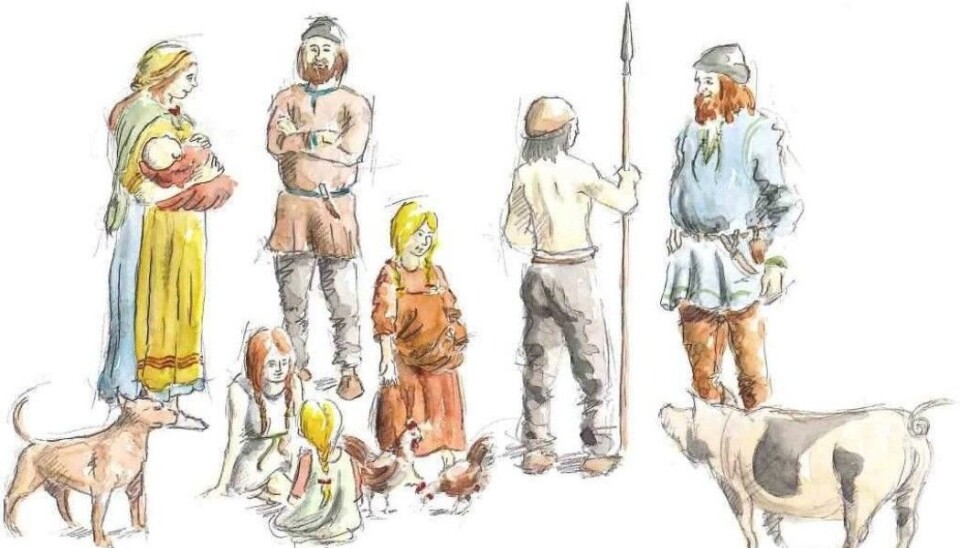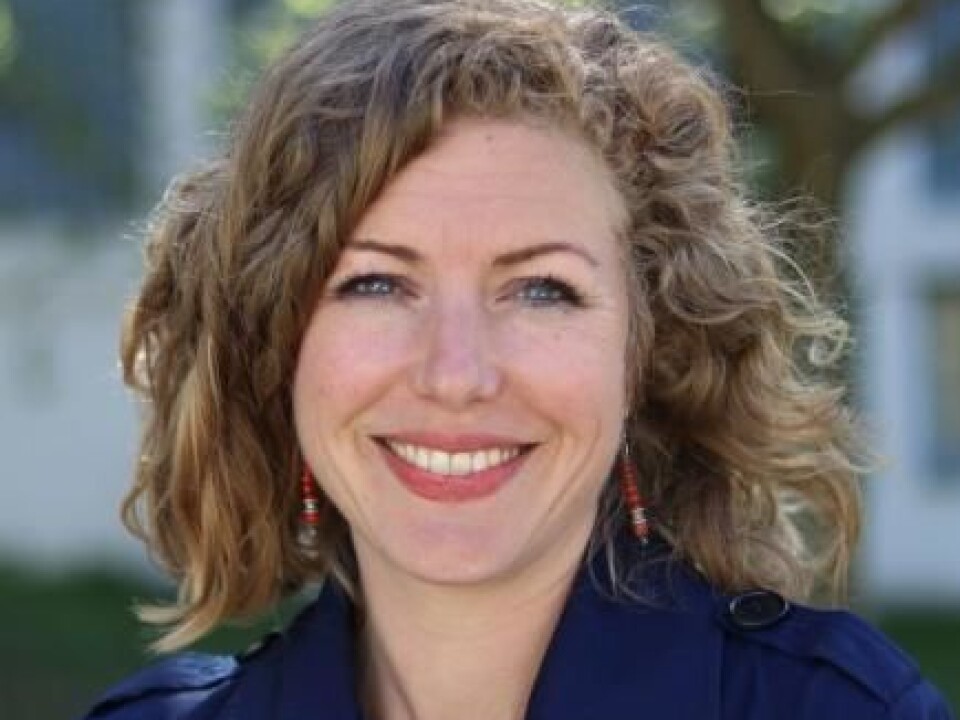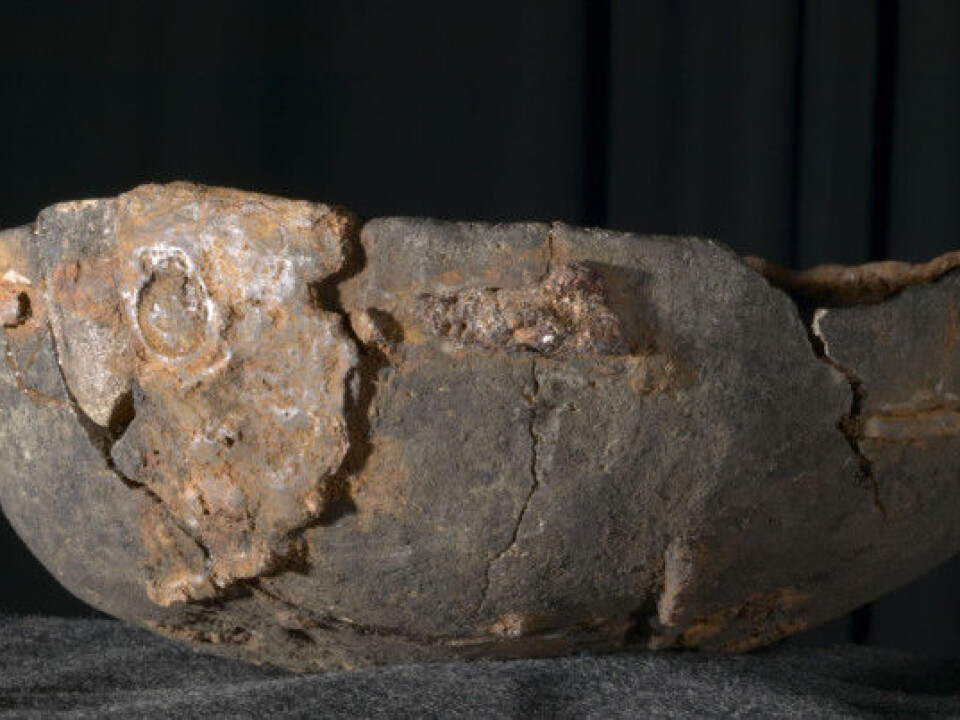
Viking men were buried with cooking gear
What were gender roles like during Viking times? A Norwegian archaeologist thinks we often misinterpret the past based on our current cultural assumptions.
Marianne Moen says that gender roles during Viking times weren’t nearly as differentiated as we might think.
“I think we need to move away from distinguishing between men’s and women’s roles during the Viking times,” she said. Moen has completed her PhD on Viking Age gender roles at the University of Oslo. Her research shows that upper-class men and women generally were buried with the same types of items — including cooking gear.
Moen went through the contents of 218 Viking graves in Vestfold, a county on the southwest side of Oslo Fjord, and sorted the artefacts she found according to type. Many of the graves were richly equipped with everything from cups and plates to horses and other livestock.
Not just housewives
Archaeologists often assume that Viking women were responsible for the house and home, while men were merchants and warriors.
However, tools and items associated with housekeeping were fairly equally distributed between men and women in the Vestfold graves.
“The key is a good example. It is often considered to be the symbol of a housewife,” Moen said. Nonetheless, almost as many men’s graves had keys as women’s graves.

“It might be time to change the story a bit,” she said.
Men were just as likely to be buried with cooking equipment as women. Ten graves containing cookware were men’s graves, while eight were women’s. Moen likes that fact. It means that men also made food, she thinks.
“My interpretation is that cooking equipment indicates hospitality. This was very important during Viking times,” she said, although others interpret it differently.
Cookware doesn’t mean that men cooked
The Gokstad Ship, the large ship displayed at the Viking Ship Museum in Oslo, was part of a man’s grave and also contained a large array of cooking equipment.
“These finds were often excused as being because men needed to make their own food on long voyages,” Moen says.
Not everyone agrees with Moen’s interpretation.
Just because men chose to bring cookware into the afterlife doesn’t necessarily mean that they did the cooking in their own home, says archaeologist Frans-Arne Stylegar.

Stylegar was previously the county conservator for Vest-Agder, the southernmost county in Norway. He currently works with cultural preservation and urban planning at the consulting firm Multiconsult.
“It is difficult to translate the persona who is idealized in burial customs into actual historical reality. It’s almost a philosophical question,” he says.
Moen also thinks there is a stark difference between life and death when it comes to gender roles. But she also thinks that the items that people were buried with have some relation to what real life was like during those times.
She reminds us that tools and equipment aren’t just something that Vikings were buried with. These items were also found in houses, although without the ability to determine who used them.
Farmers and upper-class citizens
Stylegar thinks that Moen’s PhD thesis was well done and that she makes a convincing case that there wasn’t much difference between the way upper-class Viking men and women were buried. He has studied several Viking graves in Vestfold previously, and isn’t very surprised by this conclusion.

“I’ve gotten this impression previously, but she shows it very clearly,” he said.
However, from his own work in Vestfold, he had the impression that farmers were much more concerned with marking gender in their graves than the upper-class citizens, although he points out that this was not the focus of his research.
There are still a few clear differences between genders for the elite. Men generally have weapons in their graves, while women have jewellery and textile tools, as Moen’s work shows.
Both genders have jewellery
Even so, there are more similarities than differences between the graves for viking men and women, according to Moen.
More than 40 per cent of the male graves contained jewellery such as brooches and beads.
A colleague of Moen, archaeologist Lisbeth Skogstrand confirms this in her findings from the past. Both women and men were buried with tools and drinking vessels in the 300s, according to Skogstrands doctoral thesis.
The men from the 300s also have what seem to be toiletries in their graves, including tweezers and razors likely used for personal grooming.
Interpreting the past through a modern lens
Moen wonders where the idea that there was clear gender differentiation in the past comes from.
Other researchers have pointed out that many of the items retrieved from graves in the early 1900s were interpreted based on the cultural perspectives of those times, in the same way that Moen now sees the artefacts from her modern perspective.
She calls herself a gender archaeologist, and wants to challenge other archaeologists’ interpretations of Viking culture. But entrenched perceptions among experts can be difficult to change, she says.
“I encounter quite a bit of scepticism. There are quite a few researchers who are very set in their opinion on gender when it comes to work-related roles,” Moen said.
She thinks part of the reason for this is that it is much easier to relate to a version of history that is in keeping with our modern expectations, “a version of history where men and women have specific roles in society,” she said.
“In general, in Viking Age studies, artefacts found in graves are interpreted as being connected to the person buried in the grave. This shouldn’t change for cases where artefacts don’t meet modern expectations of what a man or woman would have in their grave,” Moen said.
Reference:
Marianne Moen: Challenging Gender. A reconsideration of gender in the Viking Age using the mortuary landscape. Doctoral thesis at the Department of Archaeology, Conservation and History, University of Oslo, 2019
————————————






























